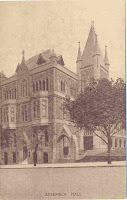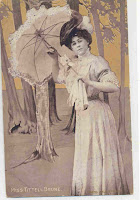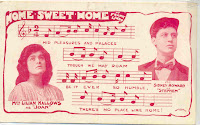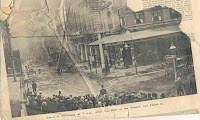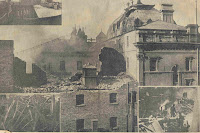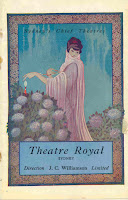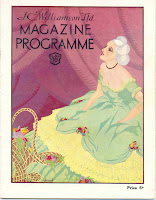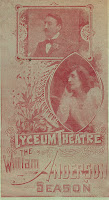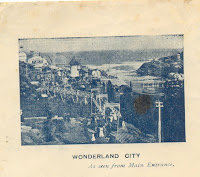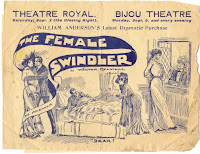She was born in Victoria on Febrary 22nd 1879 the daughter of Italian immigrant Raffallo and his Australian born wife Isabelle. Celia's name at birth was Rosabelle Ethel Celia.
 She spent her early years in Western Australia and was singing at the Fremantle Town Hall at the age of 18. A year later she was managing Sunday concerts at the Town Hall and steadily building a reputation as a talented singer and performer. She married a local man, in Perth in 1898.
She spent her early years in Western Australia and was singing at the Fremantle Town Hall at the age of 18. A year later she was managing Sunday concerts at the Town Hall and steadily building a reputation as a talented singer and performer. She married a local man, in Perth in 1898.Soon she was discovered byJ C Williamson and was off on an adventure that took her through Australia and New Zealand. She was rarely without work and was a fixture in Royal Comic Opera Productions between 1900 and 1908.
 Perhaps her most memorable performances for Williamson were in a famous series of Gilbert and Sullivan productions which toured the country in 1905-1906.
Perhaps her most memorable performances for Williamson were in a famous series of Gilbert and Sullivan productions which toured the country in 1905-1906.In 1908, Celia went to London with a Hugh Ward Company which featured Grace Palotta. Whilst there, her husband divorced her. Celia had told him by letter that she preferred the stage to spending time with him.
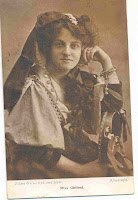 The divorce didn't seem to bother Celia because on her way home to Australia later in 1908, she married a man she met in India. Upon her return to Australia, Celia and the Ward Company performed a long tour of Australia.
The divorce didn't seem to bother Celia because on her way home to Australia later in 1908, she married a man she met in India. Upon her return to Australia, Celia and the Ward Company performed a long tour of Australia.By 1911 she was back with Williamson and performing in musical comedy and revues. Later in the decade she performed at the Tivoli and with stars such as Dorothy Brunton and Jack Cannot in variety .
She was also quite active in the Actors Union movement, signing her name to an application to have an actor's association formed in the post war period.
Celia was a plump woman and tended to act in roles suited for her shape, such as the fairy godmother in pantomime and the jolly nurse in musical comedies. By 1911 she was sick of these roles and publicly trying to lose weight. At one stage she had the whole cast of her latest show on a diet and the newspapers joked that the famous stars were fading away to nothing.
 Celia divorced her second husband after World War 1 and then married a third time in 1920.
Celia divorced her second husband after World War 1 and then married a third time in 1920.After this she gave up the stage and settled into private life. The couple stayed together until 1950 when her husband died. Celia died in 1955 in Perth.
More about Celia















